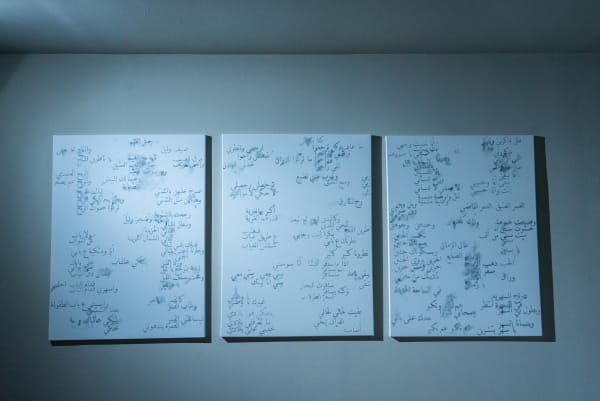Maraya Art Centre presents 33 SONGS, 99 WORDS by Sawsan Al Bahar
Songs are anchors of our identities; we inherit them. Our relationship with them changes as we grow. Our feelings and interpretations of them shift, allowing our memories to ebb and flow with them. We forget and remember them. We cling to them. They remind us of the hopes, dreams, and stories of the tribulations and sacrifices of our parents and their parents.
33 Songs, 99 Words is a dialogue between songs from the past and the perpetual present, a father-daughter project. Al Bahar has shared these songs with her father over the past 33 years, giving her a sense of belonging and sensibility.
This collection of melodies includes songs by some of the most celebrated Arab singers and musicians of the 20th century, such as Fairuz and the Rahbani brothers, who created a world of dreams and nostalgia that amplified listeners’ emotions.
The exhibition reveals a multimedia installation alluding to the long conversations, listening sessions, and research shared between the artist and her father, a passionate music aficionado. 33 Songs, 99 Words ultimately weaves together a visual dialogue, crisscrossing between these songs, father and daughter, and the past.
33 Songs are intricately inscribed onto 330 3D-printed sheets, elevated and suspended in a state of flux, evoking the strings of a monumental instrument.
The words of the songs do not appear, only their “harakat” (diacritics in Arabic), the vocalization marks that accentuate sound, pronunciation, and visualize rhythm. Like the embedded music in the Arabic language, they mark the words of every song. The songs remain an obscure and highly personal collection; the patterns only reveal visual poetry and music.
Three works in graphite on canvas complete the duality between words and songs, unfolding recurring themes through 99 words, and an audio element completes the triangle by revealing a selection of instrumental moments originating from the 33 songs. Music is intimated; sequence, repetition, and musical form become visible through material rhythm.
By taking a scalpel to these songs, Al Bahar dissects how we usually experience music: through phrases that linger, through moments of melody, and through sequence, form, and repetition.




